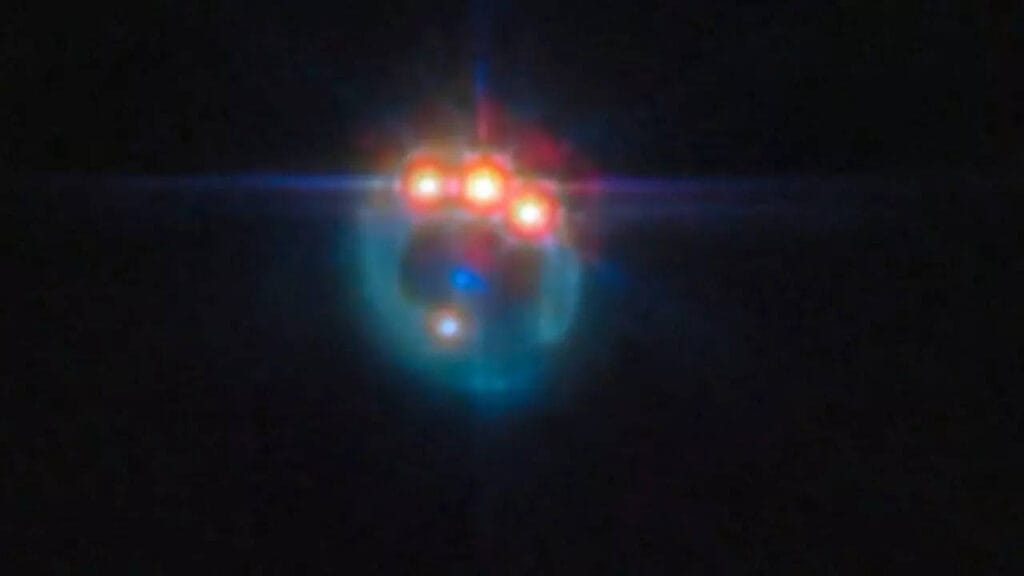Nasa’s James Webb Space Telescope (JWST) has recently captured a captivating image of an “Einstein ring,” a luminous halo of light surrounding a distant quasar named RX J1131-1231, located 6 billion light-years away in the constellation Crater.
The Marvel of Gravitational Lensing
The Einstein ring is a stunning visual display resulting from a fascinating phenomenon called gravitational lensing. This occurs when the light from a distant celestial object, like a quasar, passes through space-time curved by the gravity of a massive object situated between the distant object and the observer. The gravitational pull causes the light to bend around the intervening object, creating a ring-like appearance, as reported by Live Science.
The Enigmatic Quasar RX J1131-1231
RX J1131-1231 is not just any quasar; it houses a supermassive black hole at the heart of a young galaxy. Emitting powerful energy jets as it devours vast amounts of matter, this quasar’s light is being lensed by a neighboring galaxy, visible as a distinct blue dot at the center of the luminous ring. The gravitational lensing effect not only magnifies our view of the quasar but also creates four bright spots within the ring, which are actually mirror images of a single bright spot, as explained by the European Space Agency (ESA).
The Scientific Significance of Einstein Rings
Einstein rings, such as the one captured by JWST, play a vital role in astronomical research. These phenomena enable scientists to observe extremely distant objects that would otherwise be nearly invisible, thanks to the magnification effect of gravitational lensing. By studying gravitationally lensed objects, researchers can determine the mass of the lensing galaxy and estimate the amount of dark matter it contains. Dark matter, a mysterious substance that interacts gravitationally but does not emit light, remains a central focus of modern astrophysics.
A Tribute to Albert Einstein
The concept of gravitational lensing, which underpins the creation of Einstein rings, traces back to Albert Einstein’s revolutionary theory of general relativity in 1915. Despite the imperfections in the JWST image where the light does not form a perfect circle, the ring shape remains a compelling tool for astronomers. Previous observations of RX J1131-1231 have revealed that the quasar’s light is not perfectly aligned with the observer, leading to the distorted ring shape.
Unveiling the Universe’s Secrets
Einstein rings and other gravitationally lensed objects serve as gateways to hidden information about distant celestial bodies. In 2014, researchers leveraged the light from RX J1131-1231 to determine the spin rate of its supermassive black hole. The size and shape of these lensed objects provide scientists with valuable data that can unlock the mysteries of the universe, shedding light on the nature of dark matter and beyond.
By unraveling the complexities of gravitational lensing and studying phenomena like Einstein rings, astronomers continue to push the boundaries of our understanding of the cosmos, offering insights into the vast unknown.

